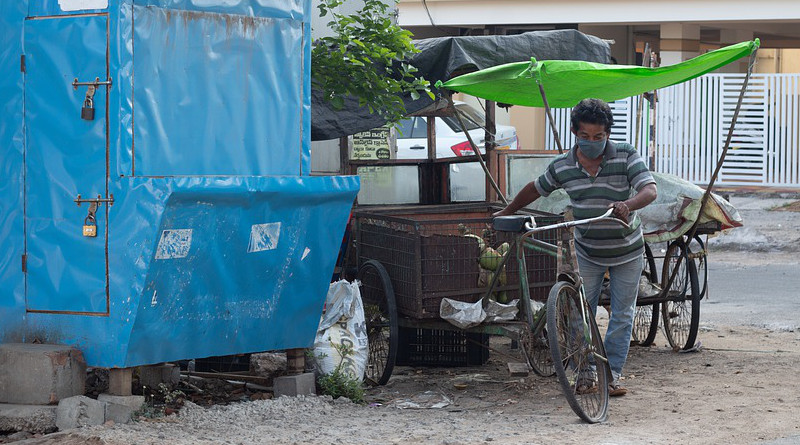Who Manages What?: COVID-19 And The Center-State Division Of Responsibilities – Analysis
By IPCS
By Dr. N Manoharan*
Who is responsible for COVID-19 management in India? The centre, the states, or both?
Going by the division of powers as per the Constitution, Schedule 7, Entry 6, “Public health and sanitation; hospitals and dispensaries” fall within the domain of states. Also, Schedules 11 and 12 spell out the powers of Panchayats and Nagarpalikas in maintaining “health and sanitation, including hospitals, primary health centres and dispensaries.” If COVID-19 had only a health dimension, the states and local bodies would have been in charge. However, the present threat goes beyond “gates, guards and guns,” and has various dimensions: national, international, socio-economic, and even security. While the centre is predominantly involved in the management of COVID-19 given this multi-dimensionality, centre-state coordination can go a long way in addressing the challenges that arise.
International Dimensions
Originally viewed as ‘China’s problem’, COVID-19 has now been declared a pandemic by the World Health Organisation (WHO)—it has now spread to every continent except Antarctica. All countries, therefore, have to be involved to contain the crisis. Borders have to closed, visiting foreigners have to be dealt with, and Indians abroad have to be facilitated safe passage home.
Since the virus has come from outside sovereign borders, it has become vital to check ports of entry and exit through air, land, and sea. While the containment requires global coordination and cooperation, it may also strain relations in the coming years, which will need deft handling by Indian foreign policy practitioners. US-China relations are already ruptured due to allegations of suppression of information about the virus, as well as the conspiracy theory of COVID-19 being a bio-weapon. India-US relations were similarly tested by export restrictions on hydroxychloroquine, a drug apparently useful for managing COVID-19.
All in all, this is an opportunity to mend relations with other countries, especially the neighbourhood. India has extended help to its neighbours by providing emergency medical supplies and also evacuating their stranded citizens from affected countries. In addition, India is at the forefront of the South Asian regional strategy through its contribution of US$ 10 million to the SAARC COVID-19 Emergency Fund. This encapsulates the international dimension, which falls solely with the centre (Schedule 7, List I, Entry 10).
Federal Aspects
In several countries across the world, COVID-19 has necessitated nation-wide lockdowns that require 24/7 monitoring. In federal countries like India, uniformity in response, both preventive and curative, is crucial. As per the Constitution, the basis of distribution of powers between the Union and states is that “only those powers which are concerned with the regulation of local problems are vested in the States and the residue specially those which tend to maintain the economic industrial and commercial unity of the country are left to the Union.”
The country’s responses therefore demand effective coordination between the centre and states, and between states themselves, to monitor and regulate the movement of people and goods across the country. Nearly half of the states are ruled by different regional parties, and three by the Congress. Due to ideological differences and a populist will to protect particular state interests, it may not be easy for all chief ministers to take a national perspective. While some states are indeed managing well, it should be noted that not all states are equipped to handle a multi-dimensional crisis of this proportion.
Financial Fallout
The financial implications of the crisis have become disproportionate for any one state to handle alone. The economic fallout needed the Reserve Bank of India’s (RBI) monitory intervention (Schedule 7, List I, Entry 38). The centre had to announce huge financial packages to mitigate the downward spiralling economic situation arising from the lockdown extension. States also needed central funding to meet the unexpected financial burden to their exchequers. The International Monetary Fund (IMF) has already cautioned about a world-wide economic recession. Stock markets have nosedived; it has hit inter- and intra-national trade. All these require pan-India financial management, which falls with the centre (Schedule 7, List I).
Security
This pandemic also has serious security implications in the form of civil unrest due to shortage of essentials and the resultant panic, inequity, unemployment, and other social distresses. As the UN Secretary General has warned, COVID-19 may lead to “opportunistic terror attacks, erosion of trust in public institutions, political tensions, and human rights violations.” Despite the current unprecedented scenario, terrorists did not hesitate to strike in Kashmir, killing four. Taking advantage of state police forces being preoccupied with lockdown-related duties, terrorists may strike again. The cyber domain is similarly vulnerable to versatile attacks, like ransomware, phishing, and the like. Countering such physical and cyber-attacks require strategy formulation at the national level.
Given COVID-19’s multi-dimensional characteristics, the centre’s predominant role is a given. At the same time, centre-state consultations and decision-making based on consensus can play a very significant role in contributing to effective management of the crisis. Given that such a pandemic may breakout again, a clear delineation of vertical and horizontal responsibilities should be laid out in the Constitution itself.
*Dr N Manoharan is Associate Professor, Department of International Studies, Political Science and History, CHRIST (Deemed to be University), Bengaluru.

